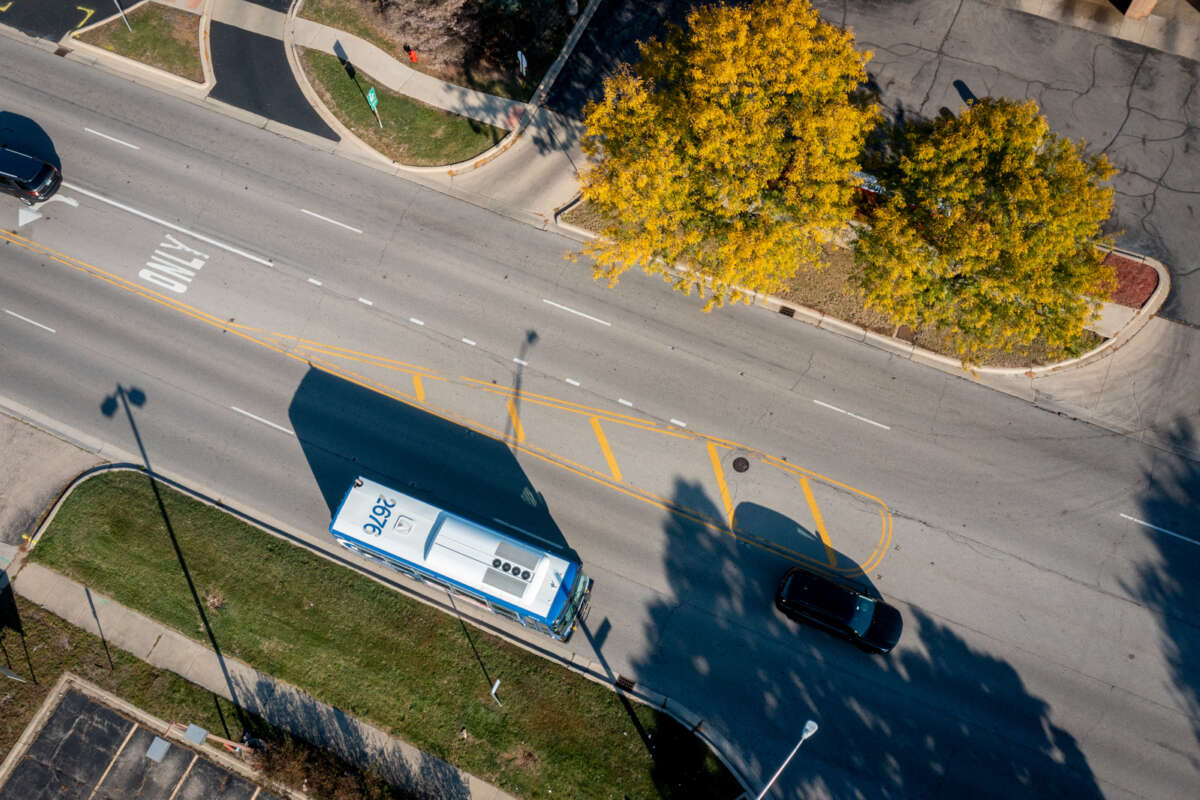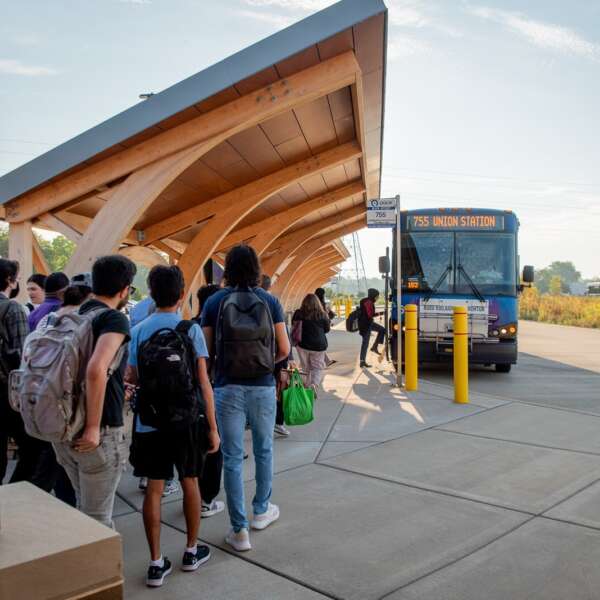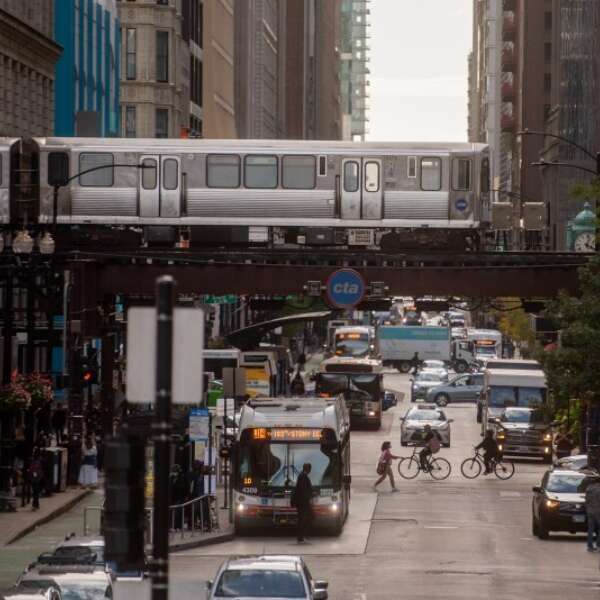Far South Halsted Corridor Study prepares for future Pace Pulse service
January 25, 2024
January 25, 2024

A new RTA Community Planning project kicked off in late 2023 as a crucial step in bringing Pace Pulse service to Chicago’s south suburbs. The Far South Halsted Corridor Study seeks to increase transportation resilience, encourage transit-oriented development (TOD), improve walkability and bicycle access, and develop strategies that prepare the corridor to support improved bus service between the Harvey Transportation Center and the Chicago Heights Transportation Center. Click here to answer a brief survey on land use, transportation, bicycle, and pedestrian improvements in the corridor. Haga clic aquí para responder una breve encuesta sobre uso del suelo, transporte, mejoras para bicicletas y peatones en el corredor.
The RTA’s Community Planning program provides funding and technical assistance to local governments to help foster the growth of sustainable, equitable, walkable, and transit-friendly communities. Since 1998, RTA has completed more than 200 projects.
Pulse is Pace’s bus rapid transit service. It offers a variety of benefits compared to regular fixed-route bus service, including faster travel times with limited stops and transit signal priority, free Wi-Fi and other amenities, modern stations with heated shelters and real-time bus arrival information, faster boarding, and improved ADA accessibility with raised bus platforms at all stations. In 2019, Pace launched the Pulse Milwaukee Line, serving thousands of commuters between Niles and Chicago. This summer, Pace launched the Pulse Dempster Line between Evanston and O’Hare Airport. The Pulse Halsted Line, scheduled to launch in 2027, will serve Pace’s highest-ridership corridor from 95th Street south to Harvey.
To prepare for an expansion of the Pulse Halsted Line from Harvey south to Chicago Heights, the RTA and Pace have initiated the Far South Halsted Corridor Study, which will focus on initial planning for future Pulse service. Although they are closely related, the Far South Halsted Corridor Study and the Pulse Halsted Line cover different geographic areas, with the Far South Halsted Corridor Study focusing exclusively on the portions of Halsted between Harvey and Chicago Heights. In conjunction with a new Transportation Center at the Harvey Metra Electric station, the Pulse Halsted Line, and the Pulse 95th Street Line, this corridor study represents significant investment by Pace to improve transportation in South Cook County.
The Far South Halsted Corridor Study builds off Pace’s previously completed plans and studies for this area, including the Pace Pulse Corridor Development Plan and the Harvey TOD Plan. The project aligns with RTA’s regional transit strategic plan, Transit is the Answer, which calls on the agency to support communities’ efforts to improve the area around their transit stations and stops and pursue equitable transit-oriented development, as well as to partner with roadway agencies to build more transit-friendly streets and advance bus rapid transit.
One of the project team’s first tasks will be to investigate the existing conditions within the study area to understand how IL Route 1/Halsted’s roadway infrastructure should accommodate Pace Pulse service. A sidewalk and bicycle infrastructure inventory will also be completed, as well as a crash analysis, transit analysis, and market analysis. The market analysis will make recommendations for the type of development opportunities in the residential, commercial, light industrial, and hotel and entertainment markets that are feasible along the corridor.
The development of the study will be guided by a steering committee made up of individuals from the following organizations and municipalities: Chicago Heights, East Hazel Crest, Glenwood, Harvey, Homewood, South Holland, Bloom Township, Prairie State College, RTA, Pace, Metra, the Chicago Metropolitan Agency for Planning, the Illinois Department of Transportation, Illinois Tollway, Cook County, South Suburban Mayors and Managers Association, Chicago Southland Chamber of Commerce, and Wind Creek Casino. Community engagement around the study will be guided by three core principles: inclusion, transparency, and collaboration. The approach is focused on building trust and creating a sense of ownership in the communities within the study area. One public meeting will be held to foster awareness of the project and to encourage input. Additionally, there will be several pop-up meetings throughout the corridor to meet community members where they are. Stakeholders will be compensated for their time providing feedback and input, dependent upon their level of participation.
Learn more about the RTA’s Community Planning program.
Subscribe to our Newsletter
Related Articles
 For the third year in a row, regional transit ridership was up by double-digits in 2024
For the third year in a row, regional transit ridership was up by double-digits in 2024
Ridership across the Chicago region’s transit system continued to increase throughout 2024, according to the latest data from CTA, Metra, and Pace. The regio...
January 28, 2025 RTA is seeking $1.5 billion in annual operating funding. What would that mean for your commute?
RTA is seeking $1.5 billion in annual operating funding. What would that mean for your commute?
On January 15, RTA released Transforming Transit, a vision for the regional transit system with $1.5 billion in annual operating funding supported by a stron...
January 28, 2025 RTA proposes reforms to increase efficiency, transparency, and accountability across transit system
RTA proposes reforms to increase efficiency, transparency, and accountability across transit system
RTA is proposing a historic restructuring of the region’s transit governance to maximize the impact of new operating funding and ensure all riders experience...
January 24, 2025 What Chicago can learn from Philadelphia as the transit fiscal cliff approaches
What Chicago can learn from Philadelphia as the transit fiscal cliff approaches
Beginning in 2026, Chicago’s regional transit system faces a projected $770 million annual budget gap. At nearly 20% of the annual operating budget, this gap...
January 23, 2025 2024 recap: RTA brings 8 Transit Station Activations throughout region as part of pilot program
2024 recap: RTA brings 8 Transit Station Activations throughout region as part of pilot program
In spring 2024, RTA announced more than $120,000 in funding for eight Transit Station Activation projects as part of a pilot program with the goal of improvi...
January 9, 2025 Village of La Grange adopts comprehensive plan calling for more density near transit
Village of La Grange adopts comprehensive plan calling for more density near transit
In November, the Village of La Grange voted to adopt La Grange Forward, a comprehensive plan developed as part of the RTA’s Community Planning program. The d...
January 7, 2025